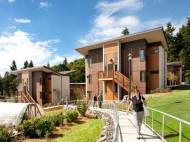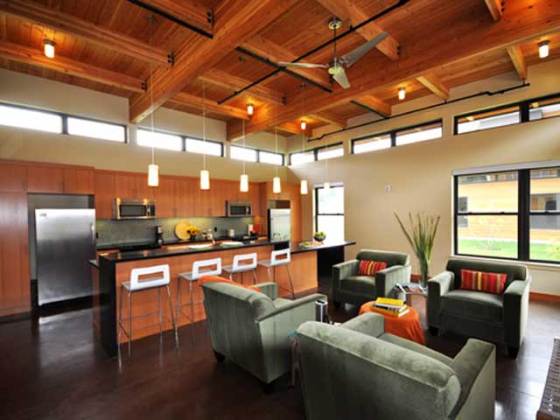Green architecture – Bastyr Student Village, Seattle
 Bastyr’s Student Village is a reflection of the University’s vision to transform the health and well-being of the human community. The project has been awarded the 2010 LEED for Homes Project of the Year in the “Outstanding Multifamily” category by the USGBC. The 132-student residential village was designed by CollinsWoerman, Seattle’s company which specializes in sustainable architecture, design and planning.
Bastyr’s Student Village is a reflection of the University’s vision to transform the health and well-being of the human community. The project has been awarded the 2010 LEED for Homes Project of the Year in the “Outstanding Multifamily” category by the USGBC. The 132-student residential village was designed by CollinsWoerman, Seattle’s company which specializes in sustainable architecture, design and planning.
“This project is all about understanding the distinctive priorities of this University and creating an environment that delivers comfortable living space for students, while reflecting the values, approach and mission of the school”, said Arlan Collins, principal-in-charge of the project.
The non-traditional student village consists of eleven three-story cottages, each approximately 430 square meters (4,600 square feet). Each unit features a separate bedroom and bath for twelve students, as well as a communal living area consisting of a living room/kitchen great room, a separate dining area that can also be used for quiet study, as well as laundry facilities.
According to Collins, studies show that groups of 12 or fewer people are the ideal size to create intellectual energy and optimum dynamics. The arrangement of the cottages around outdoor courtyards, connected by walkways lined with drought-tolerant and native landscaping, as well as kitchen garden areas for growing herbs, encourages broader interaction among the 132 students housed on-site. The village minimizes impact to the environment, fitting into the 51-acre campus’ pristine natural setting in Kenmore, Wash., just outside of Seattle. Special care was taken to leave nearby wooded areas and wetlands undisturbed before and during construction.
The buildings incorporate a host of green elements designed to save energy, the most significant of which is the elimination of unnecessary space, according to Collins. Corridors, multiple stairwells, and elevators are not needed in the free-standing structures, which Collins describes as “scaled to deliver everything we want and none of what we don’t want.”
Traditional green features include radiant floor heating, ultra high efficiency gas boilers and water heaters, heat-recovery, whole house natural ventilation, high R-value insulation, and high efficiency lighting systems with daylight controls. Low-flow plumbing fixtures and energy star-rated appliances and light fixtures are used throughout. Interior materials are 100 percent no- or low-VOC, as Bastyr students and faculty, by virtue of their training and mindset, are especially aware of the impact of air quality and indoor pollutants.
A sustainable water system that captures rainwater from the “butterfly roofs” on cottages drains to an Olympic-sized swimming pool reservoir beneath a nearby parking lot. The roofs have been designed to support vegetation in the future.
The smaller living units proved less costly to build than a traditional dorm, and will be less costly to operate. In fact, according to CollinsWoerman project manager John Aldredge, the University experienced significant cost savings through the value engineering process that CollinsWoerman and contractor Schuchart utilized.
“We went through four rounds of budgeting to get the absolute best cost savings for the University”, said Aldredge. “By working closely together we were able to achieve significant efficiencies, and we benefited from both economies of scale and repetition.”










Leave your response!